Cooker hoods | Hidden in plain sight
Chic living space kitchens have seen a requirement for extraction that is neither seen, nor heard
Chic living space kitchens have seen a requirement for cooker hoods that are neither seen, nor heard
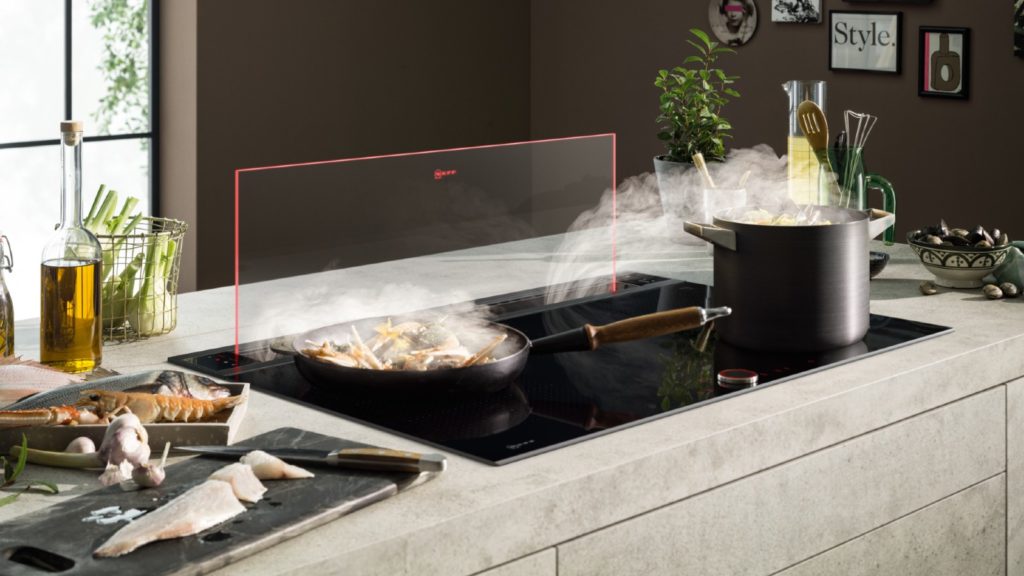
The Neff Glass Draft hood features Guided Air technology with a low-pressure air curtain behind the glass and vents behind to remove steam and odour
With the kitchen now a living space, able to transform from a practical cooking zone into a relaxation area, extraction appliances are increasingly integrated into the fabric of a room.
Whether built under kitchen furniture, integrated into a worktop or hob, set into the ceiling, cooker hoods are increasingly not seen (and with low decibel operation) nor heard.
Sponsored Video
Managing director of Falmec UK Sean Drumm says the concealed extraction segment has been growing rapidly: “Last year we launched our built-in concealed luxury range and the early success of these models has brought our concealed offering to over 60% of our sales.”
Ceilings and downdrafts
With such an array of extraction, designed to fit seamlessly into kitchen schemes, which are proving to be most popular?
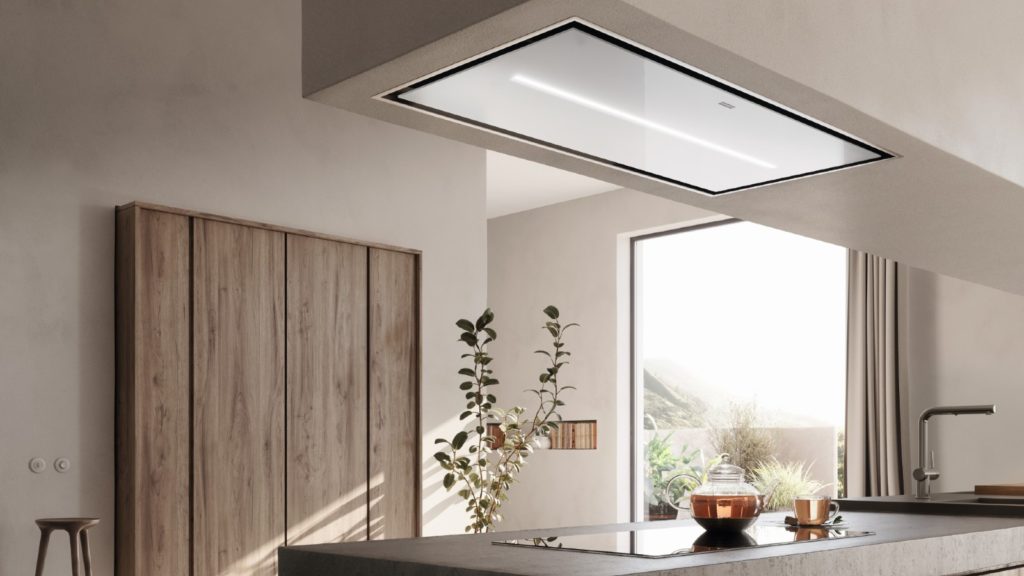
Franke Mythos Ceiling Air Hub combines an extractor with sanitisation system to improve air quality, using UV-C lamps. Available in White and Stainless Steel finishes
Where sightlines across a kitchen space are most important, ceiling and downdrafts continue to rule.
Sales and marketing director of Franke UK Jo Sargent continues: “We’ve seen heightened interest in ceiling extractors which are designed to be flush with the surface, creating an almost invisible appearance.
“Many ceiling models now include ambient and task lighting which offers consumers the best of both worlds when substituting pendant lighting for the unobtrusive look of a ceiling extractor.”
Whereas, sales director of Novy Rien Laverge says: “As a luxury induction and extraction specialist, more than 50% of Novy UK’s sales are for vented hobs, making them the most popular type of concealed extraction products in our appliance portfolio.”
Against a wall
But if the kitchen space is compact or extraction is needed against a wall, then the built-under model remains key.
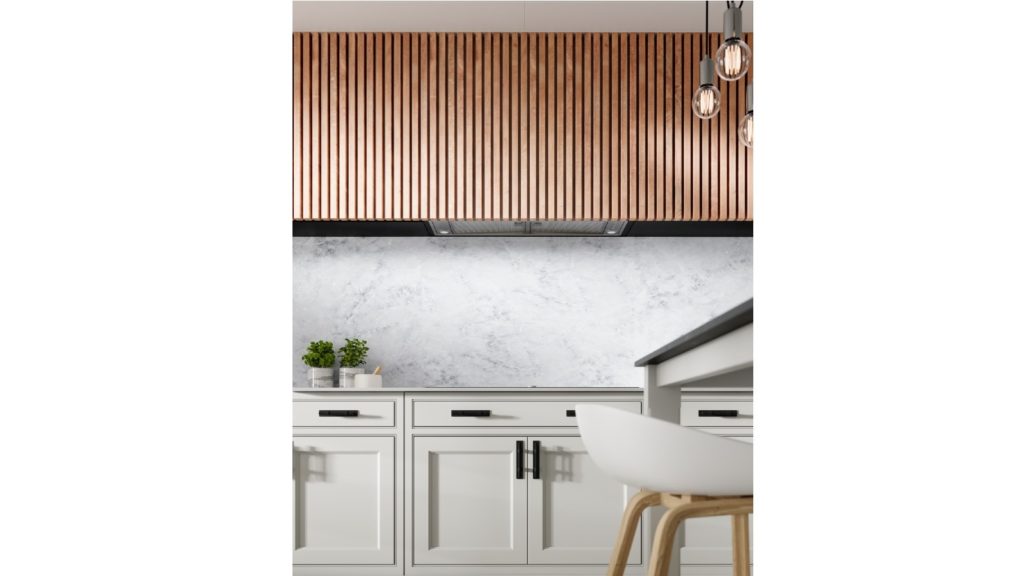
A narrow version of its Prime extractor, Westin has introduced the Prime Slim in five widths
Brand manager at Westin James Rayner explains they are not a design compromise and reminds retailers of their benefits adding: “The beauty of this type of extraction is that due to the applications it is primarily used in, height isn’t normally an issue, meaning that all-important vaulted flum catchment area can be included in the base of the hood, ensuring minimal fume slippage into the room.
“Cooking against a wall also brings its own advantages compared to cooking over an island, as this situation is subject to far fewer cross draughts compare to the centre of the room.”
Designing out challenges
Since extraction is chosen based on project demands and room constraints, appliance manufacturers have worked hard at combating spatial design challenges, enabling designers a wider choice of solutions.
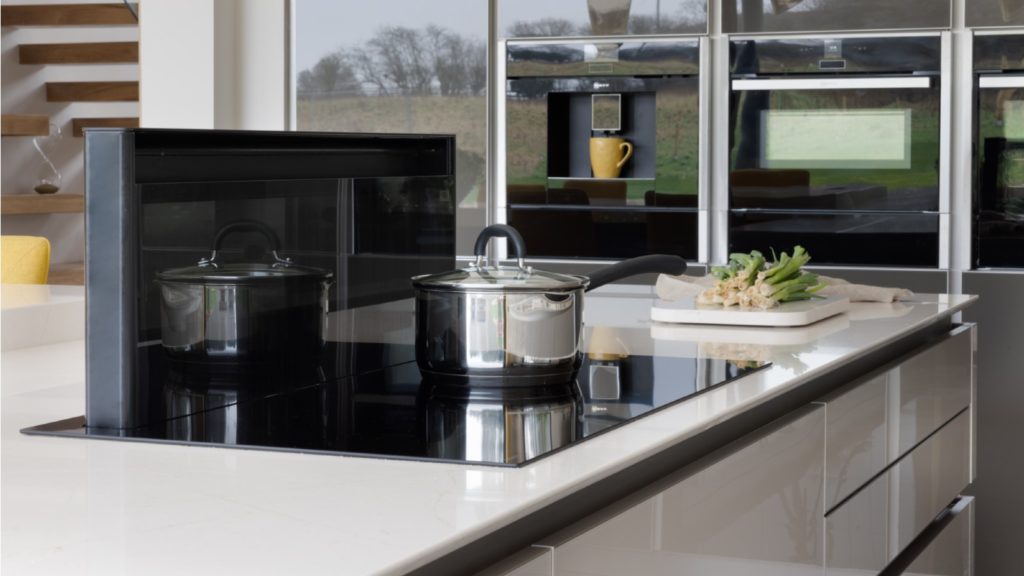
The Novy Panorama PRO 90 Vented Downdraft Induction Hob with a concealed extraction tower within the hob’s surface. Image credit: Searle & Taylor Kitchens | Photographer: Paul Craig
Jo Sargent of Franke points to developments in ceiling hoods: “A big concern with ceiling hoods is the depth of the ceiling and position of the joists, as older properties often have narrower roof voids. To get around this, we have included slimmer ceiling models.”
While Novy has explored the space below the worksurface, as Rien Laverge explains: “A potential barrier to the sale of vented hobs is the size of the motor, which differs from brand to brand, but can take up a large area of storage space in the cupboard beneath the hob.
Providing a solution to this issue, the Novy Panorama feaures a slim, flat motor that fits at the back of a kitchen cabinet, allow for up to 400mm drawers to be installed in front of it.”
And Falmec has considered how to maximise storage space around the use of a built-in extractor. Sean Drumm explains: “Our built-in models are changing over to allow you to gain back 50% of the space previously lost to a built-in canopy.
“In the past, the whole cabinet would have been taken up by the actual canopy, so this type of concealed extraction is becoming very popular for practical and space reasons.”
Forming the structure
However, concealed doesn’t mean out of sight and, in fact, extractors can be hidden in plain view, as part of the kitchen structure.
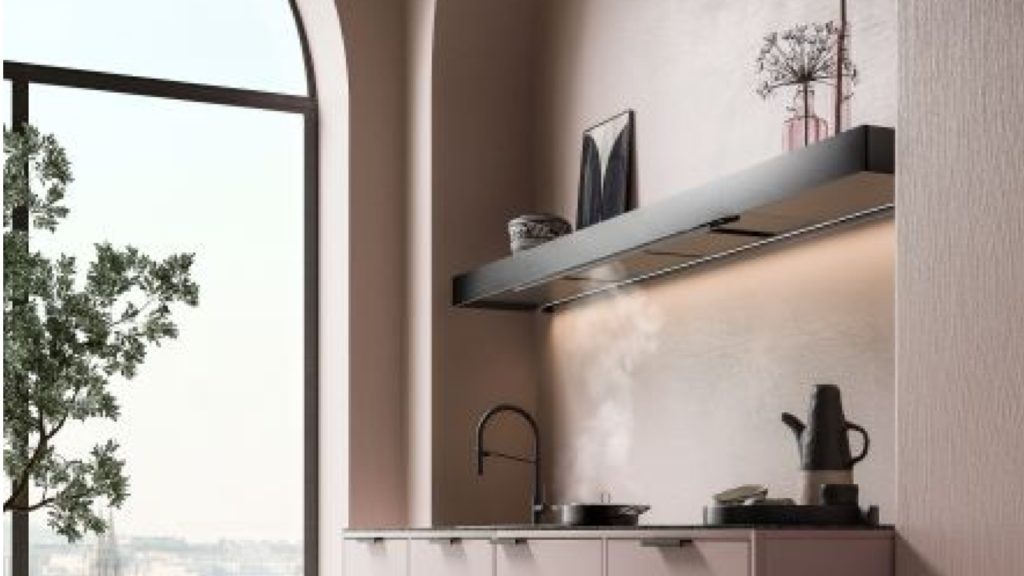
Designed to form continuous storage along the kitchen wall, Falmec Shelf has 600 and 900mm modules which can be added to 1200mm hood element
Think canopy extractors which form part of overhead, open storage. Sean Drumm of Falmec continues: “The bonus for customers is that these extraction products are designed to blend into the décor rather than stand out like a sore thumb, so they fulfil a dual purpose, as shown by the award-winning Shelf and Air Wall (a glass back panel which is magnetic so can be used for storing utensils). Both are already 2023 international award winners.”
Aiding air quality
What is of most utmost importance is the performance of the extraction and industry experts agree that concealed models equal their focal counterparts in technology.
Franke offers Air Hub, which combines extraction and UV-C lamps to cleanse the air, across its cooker hood designs and Jo Sargent adds: “Similarly, our VOC (Volatile Organic Compound) eliminating AQ Sense range is available in ceiling and wall mounted options and our Sound Pro Blower technology, which reduces the noise threshold of our hoods by up to -6dB is available across a wide range of designs from concealed to statement island hoods.”
But what is coming next in the design of cooker hoods? Sean Drumm hints at innovations set to be launched by Falmec in 2024, with rising costs of energy, around the globe: “They will be looking at ways to ensure that we are not wasting any warm heated air by extracting it out of the home in future.”
Related Articles
#socialwall
Sintered stone manufacturer Neolith has launched Calacatta Roma and Cappadocia Sunset, inspired by nature and classical architecture, and for use in kitchens or bathrooms walls, floors, in gardens or facades.

They belong to The New Classtone and Fusioncollections which interpret marble and natural stone, respectively, and boast Neolith’s antibacterial NeolEAT technology.
Inspired by Ancient Rome, Calacatta Roma (pictured top) pays homage to Italian Carrara marble, with ochre and grey veins in a white background.
While the Cappadocia region, in central Turkey, with its rock formations formed by volcanoes and underground cities, has inspired Cappadocia Sunset (pictured below).

Just like all of Neolith’s surfaces, Calacatta Roma and Cappadocia Sunset are resistant to heat and atmospheric conditions, are 100% recyclable, and do not contain added quartz to their formulation.
Mar 14, 2024
JUST OUT: @AcquabellaBath has unveiled a choice of shower grate patterns for its Base and Arq shower trays… https://t.co/kMN83c40Qf
JUST OUT: @FrankeUK unveils Mythos single lever mixers in Swivel Spout and Pull-out Nozzle options. #kitchendesign https://t.co/TSKCAo5r0e
INTERVIEW: Sales and marketing director of @blumuk David Sanders on how the kitchen industry has changed post-pand… https://t.co/k9LIpUhhDF
NEWS: Challenging housing market is driving home improvements, finds new research by @HafeleUK #HomeImprovement… https://t.co/eMB7jludIm
NEWS: British manufacturer @kudosshowersltd acquired by European SanSwiss. #acquisition #manufacturers #bathrooms https://t.co/gpOv7jMevn
NEWS: @HafeleUK announces Richard Curtis as managing director. #newhire #appointment #leadership https://t.co/NP8U5ramOb
NEWS: @officialbikbbi names CT1 sealant manufacturer as corporate sponsor. #installation #installer https://t.co/8zsxs2HI3n
NEWS: @quookeruk named one of fastest-growing companies in North West. #business #Awards https://t.co/9zZ1ZDGrFI
RETAILER FOCUS: Managing director and design director of UK Kitchen Retailer of the Year @KitchensbyJSG Jim Geddes… https://t.co/JhL3vmxwbd
NEWS: Consumers are renovating for long term, with kitchens and bathrooms a priority, finds @HouzzUK… https://t.co/9VhoTUDI0B
PROFILE: Managing Director of Flair Showers Alan Wright talks about the relaunch of the company, creation of a Show… https://t.co/WDMPqDt2Uk
The new @blumuk carbon black LEGRABOX boasts beautifully slim drawer sides, bringing furniture onto trend, easily b… https://t.co/DrEXXWTyQb
NEWS: House of Fraser owner @FrasersGroupPLC enters strategic partnership with @ao, buying a stake in the online e… https://t.co/44N0O9bekn
NEWS: @HowdensJoinery awarded @WhichUK Best Buy for its rigid cabinets and handleless kitchens. #kitchen… https://t.co/rALz8XRHbv
NEWS: @grohe invites 800 guests from around the world to its Grohe X Professional event in Lisbon, Portugal.… https://t.co/2RGjDum980
JUST OUT: Home appliance brand Candy has unveiled the Rapido dishwasher, claimed to be the fastest and most spaciou… https://t.co/mbWn2pJp2C
Newsletter
Sign up to receive our newsletter and we’ll send you details of our latest videos, competitions and much more

